
In a recent blog post titled “Higher Ed Story Marketing: The Art Of Connecting With Audiences Through Storytelling,” we shared how colleges and universities can build trust and stand out in an increasingly competitive higher ed marketplace by connecting with audiences through the art of storytelling.
We touched on the storytelling process and the importance of:
In this week’s blog post, we decided to go the “show, don’t tell” route and provide real-world story marketing examples from some of our clients.
The following examples include stories our clients shared about their student, parent, faculty, staff, donor, and community involvement to inform, inspire, motivate and educate their readership.
First Generation Students
The University of Auburn’s Office of Inclusion and Diversity recently published a story about an event celebrating first-generation students on campus. The school held the event on November 8 in honor of National First-Generation College Student Day, building trust and a place of inclusion and belonging for those students who are the first in their family to attend college.
The article included an embedded short-form video of the event as well as quotes from current students, telling how their experience as first-gen scholars creates a legacy and a positive impact on future generations. This story is an example of social proof, which will inspire and motivate countless first-gen students to realize their dream of one day graduating as Auburn Tigers.
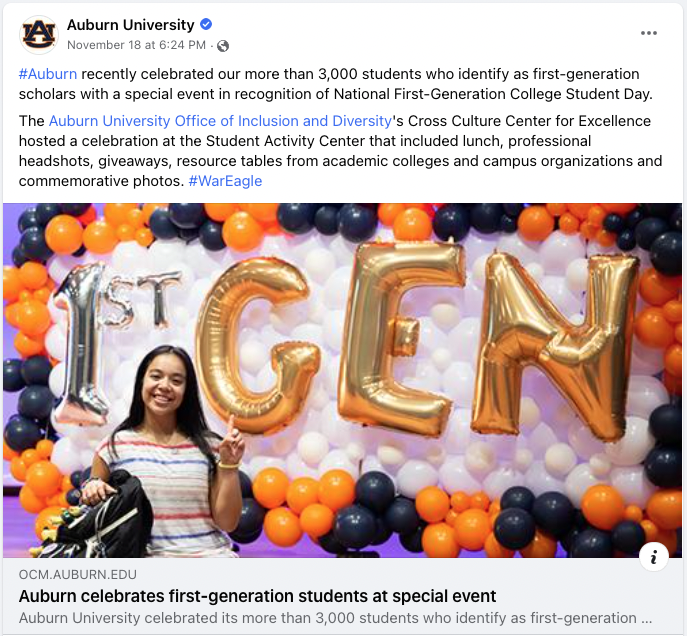
Career-Ready Students
The University of Houston's (UH) Career Services Center does a great job of sharing student success stories on its page. Career readiness and the value of a post-secondary degree are of the utmost importance to students and their parents deciding where to go to college.
Stories such as the one of Zaid Vaid, a student at UH’s C.T. Bauer College of Business, and his experience as an Amazon Area Manager Intern help potential students trust that UH will:
1) help them gain relevant experience through internships at prominent organizations and
2) get them the necessary skills to be successful after graduation.
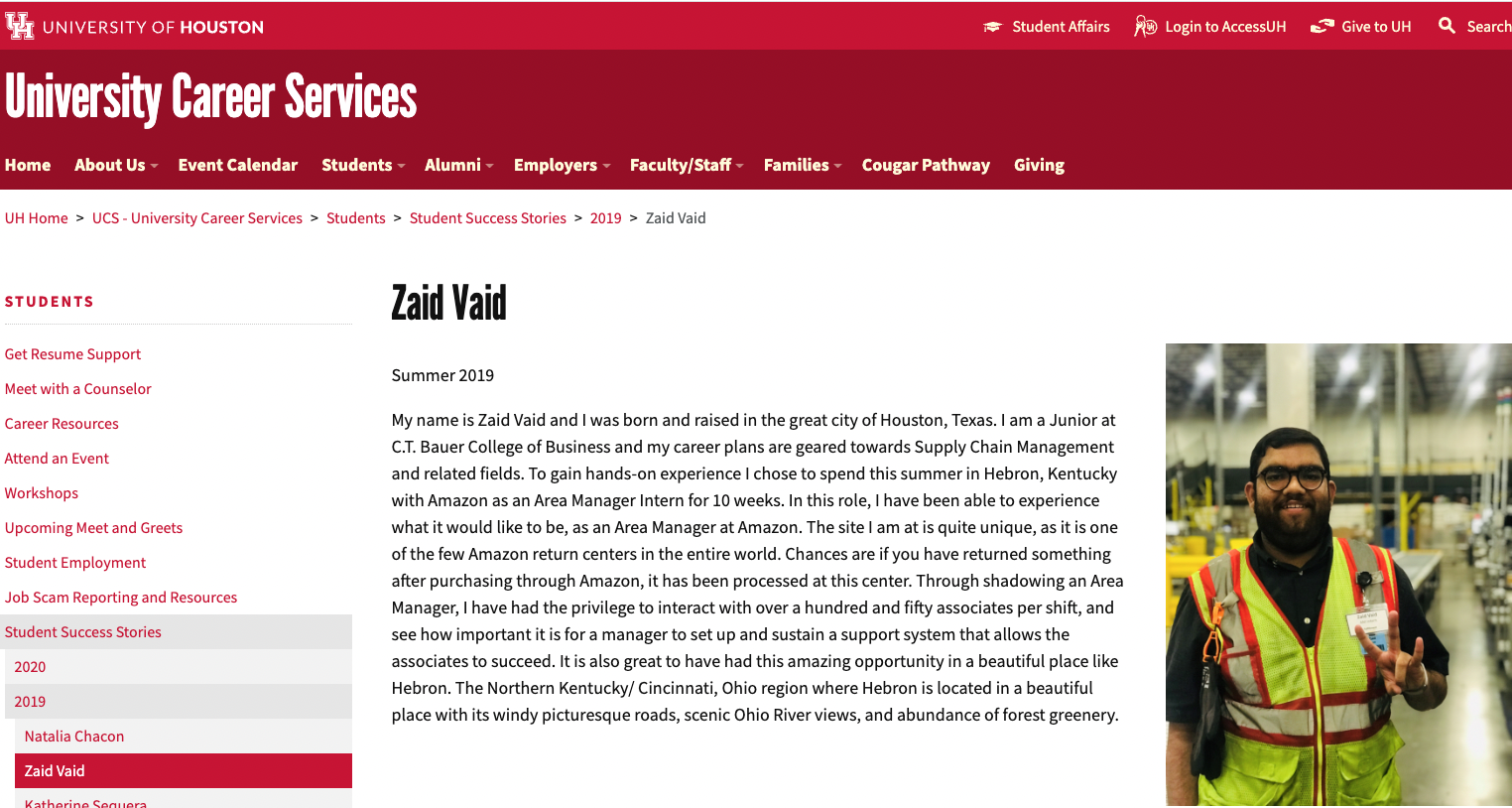
Online Students
According to a recent study by Mckinsey & Company, the demand for online education is growing. The COVID-19 pandemic forced almost everyone into a remote learning environment, and students recognized that they could earn the same degree they would have on campus through an online forum without having to adhere to a set schedule.
The future of higher education is flexibility, or so it seems.
Purdue University's Krannert School of Management dedicates a page to showcasing success stories from students who earned their Master of Business Administration (MBA) online. One such video story highlights Kristin Zalewski, a Risk & Compliance Manager at Google. She shares what classes she enjoyed during her MBA studies at Purdue and how the knowledge obtained helped her succeed in her role at Google affirming the credibility and trust of Purdue's MBA program.
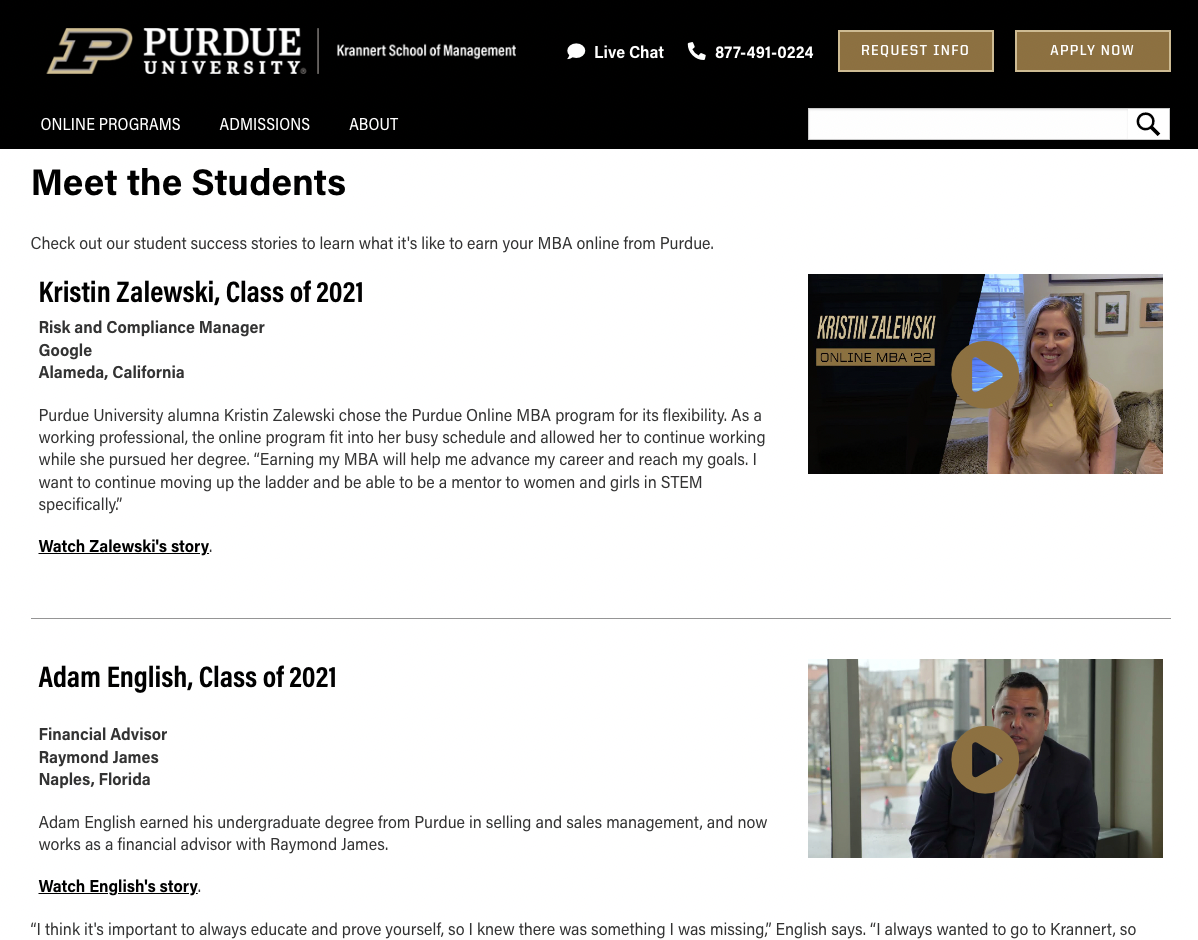
A survey conducted by EAB revealed that parents of Gen Z high school students highly influence their decisions on where to go to college. Parents are among the top influencers of college-bound high schoolers deciding where to enroll, as outlined in our blog post about 5 Ways to Engage Parents of College-Bound High Schoolers Through Personalization.
Florida International University's story titled "Sharing FIU with mom become a Panther family tradition" focuses on how FIU lets parents be involved in their children's college experience through an annual Parent and Family Day hosted by the school's Orientation and Family Program. This story helps parents feel valued and included. It also allows them to connect with other FIU families and interact with faculty and staff members, giving a sense of transparency and openness.
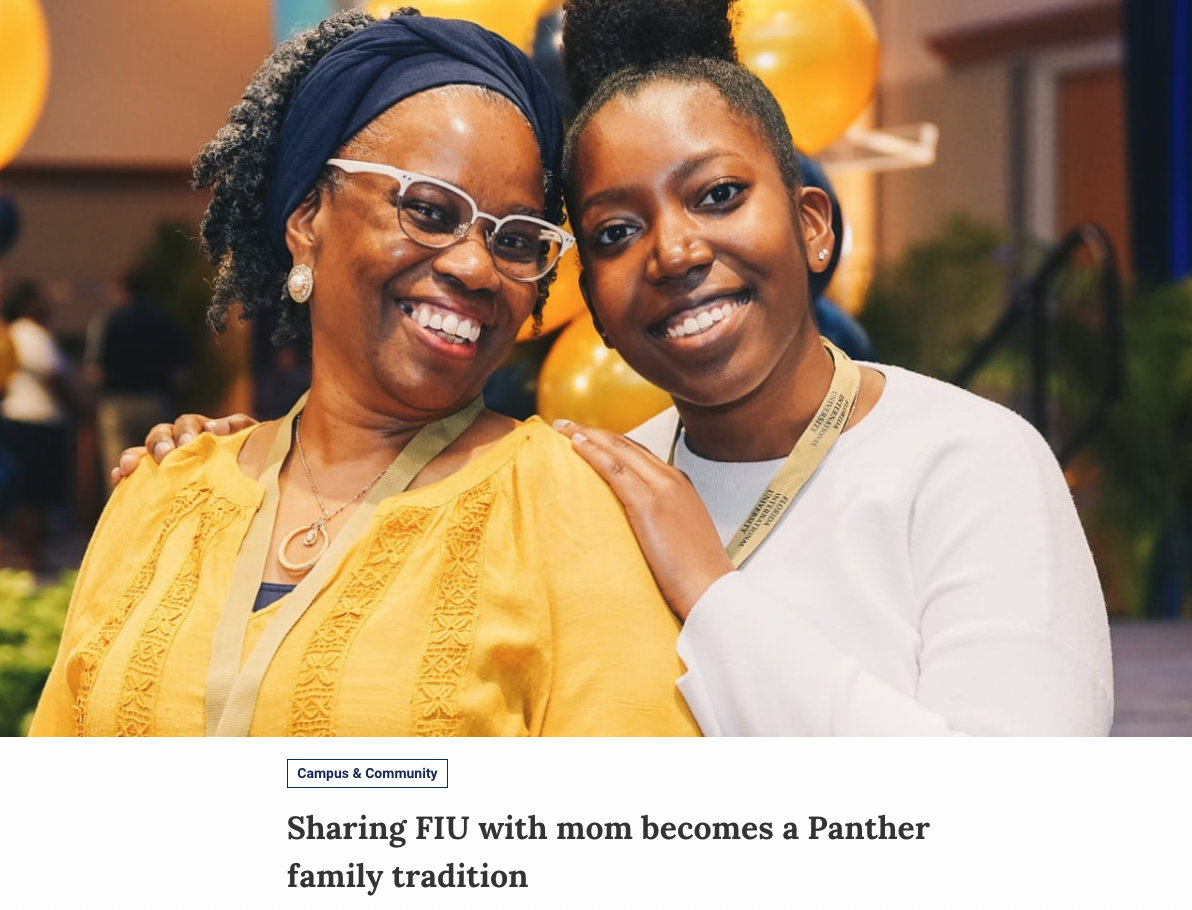
Spotlights and social proof campaigns are important aspects of any marketing or public relations campaign. Students and caretakers often rely on reviews about members of the faculty found on sites like Rate My Professor, which are generally fabricated, one-sided representations.
Highlighting members of the facility or staff, such as the ones published by the University of Alberta and the Clemson University Honors College, helps students and their parents get a better idea about who the people on campus are. It also gives faculty and staff members the ability to get to know their peers on a more personal level.
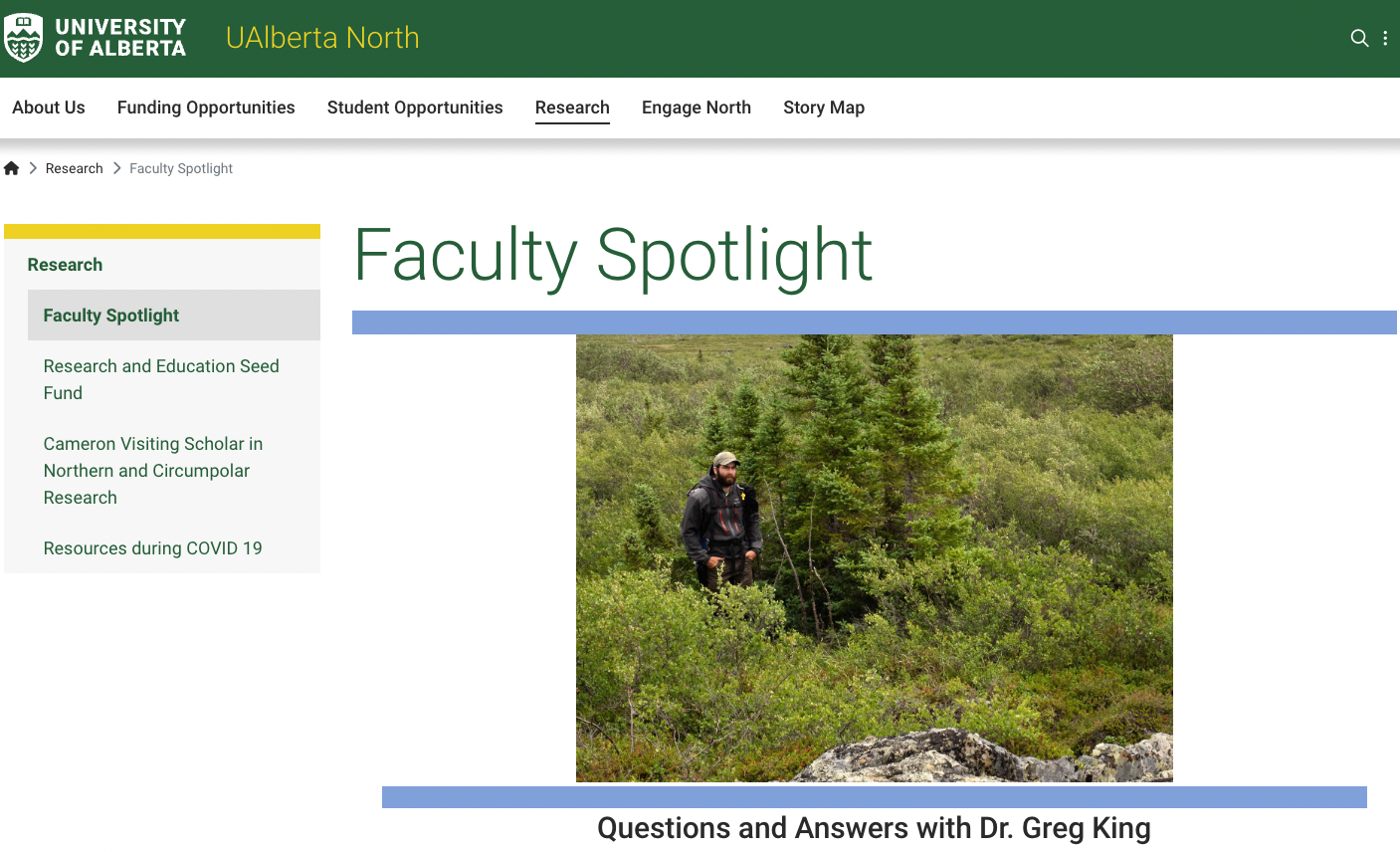
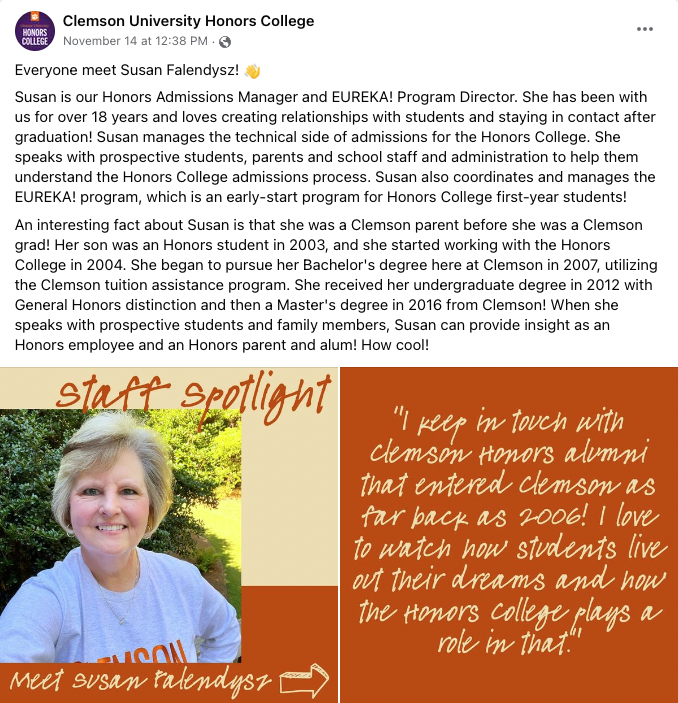
Additionally, these types of stories help employees feel valued by their institution when featured on a university website. Stories such as these not only help with marketing and PR efforts, but also with employee retention.
After all, “feeling appreciated strengthens the bond between people, and helps satisfy a longing for health attachment,” states an article published in Psychology Today.
Testimonials from former students are huge! They serve as social proof, create value, and support an institution's brand messaging beyond what traditional pitches can offer.
People buy into people, not companies or institutions.
Alumni also serve as fantastic marketing tools. Pages such as the Alumni Spotlight page from Indiana University or the Mt. Hood Community College's Alumni Story page showcase where a degree from a particular college or university can take prospective students in the future and support the school's value proposition to its potential students.
Mentioning and featuring alumni also raises their social status and encourages them to support the university beyond offering mere words but material assets – as donors.
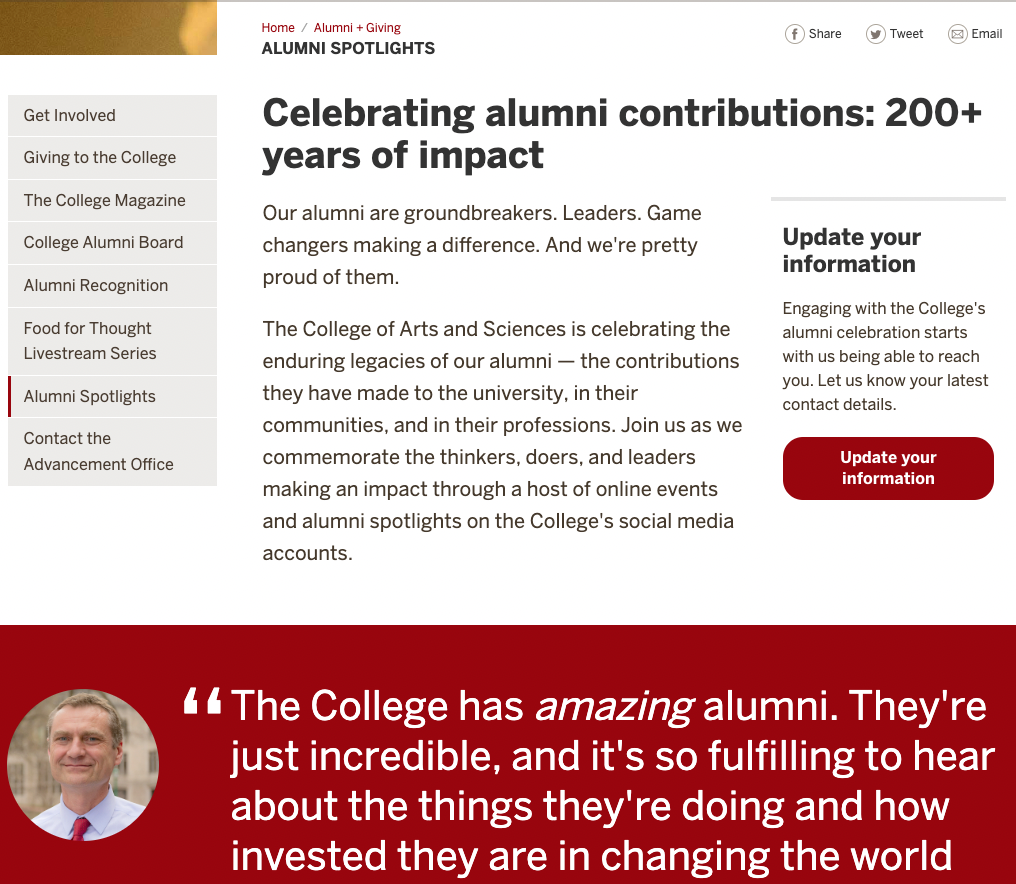
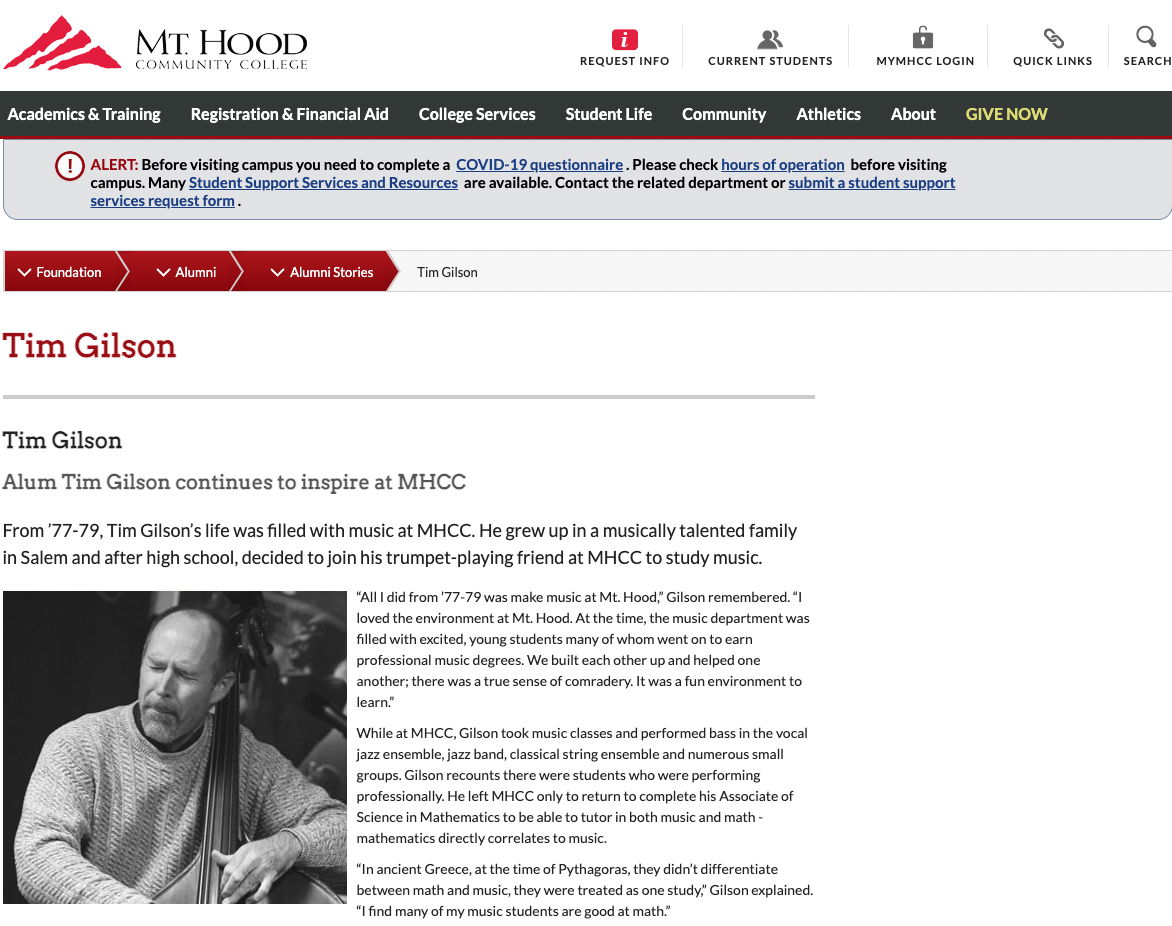
The support received from college and university donors is vital to any higher ed institution. Financial support often goes towards scholarship opportunities, academic programs, faculty development, community engagement, and other priorities.
Donor stories such as the ones shared by Mercer County Community College and Westminster College offer a sense of appreciation. But more importantly, donor stories honor the people who selflessly give their funds to impact the lives of those who try to walk in their footsteps. These stories also provide transparency and inform current or potential donors about how their resources are invested, and encourage future giving.
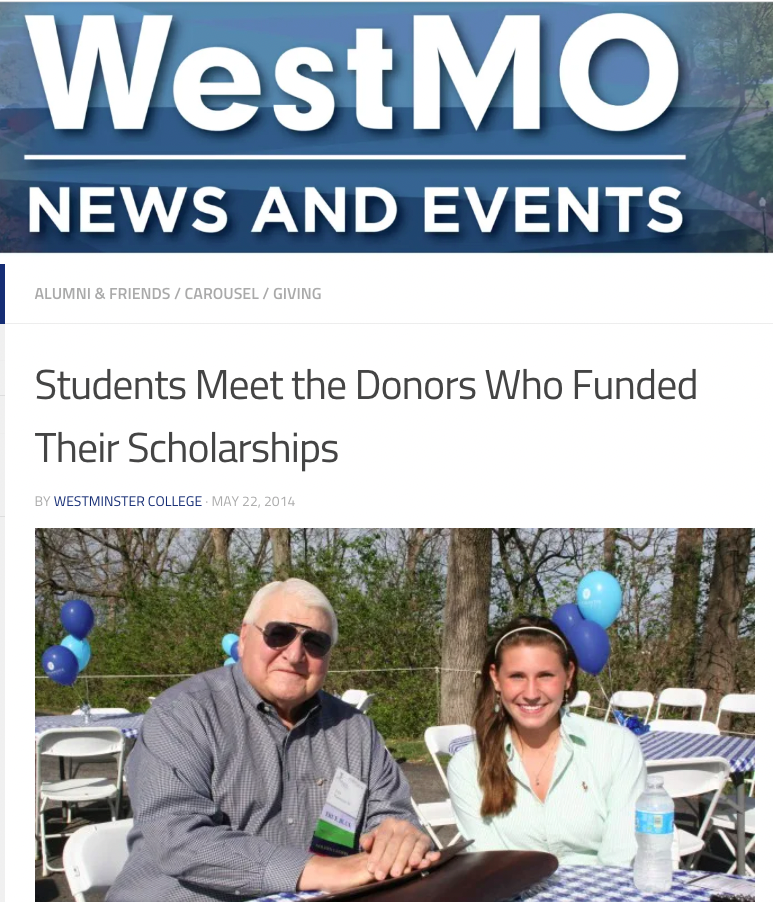

The English poet John Donne famously wrote, "no man is an island." Well, neither is a college or university. They are part of a whole, a neighborhood, a community surrounding it. And as members of a community, it's an institution's duty to be actively involved in the betterment of it.
The PR giant Harold Burson reportedly said, "Public relations is doing good and getting credit for it."
Statements such as this one can have a negative connotation, depending on who you ask. Nonetheless, higher ed institutions should report and tell stories about their community involvement, not to boast about themselves, but to inform community members how the student body, faculty, and staff strengthen a given community at large.
Some good examples of this are shown by Hawai'i Pacific University's story on its involvement in the island's plastic road pilot project, a new sustainable road paving initiative, or the impact Emory University has on its community through its Emory Cares Day.
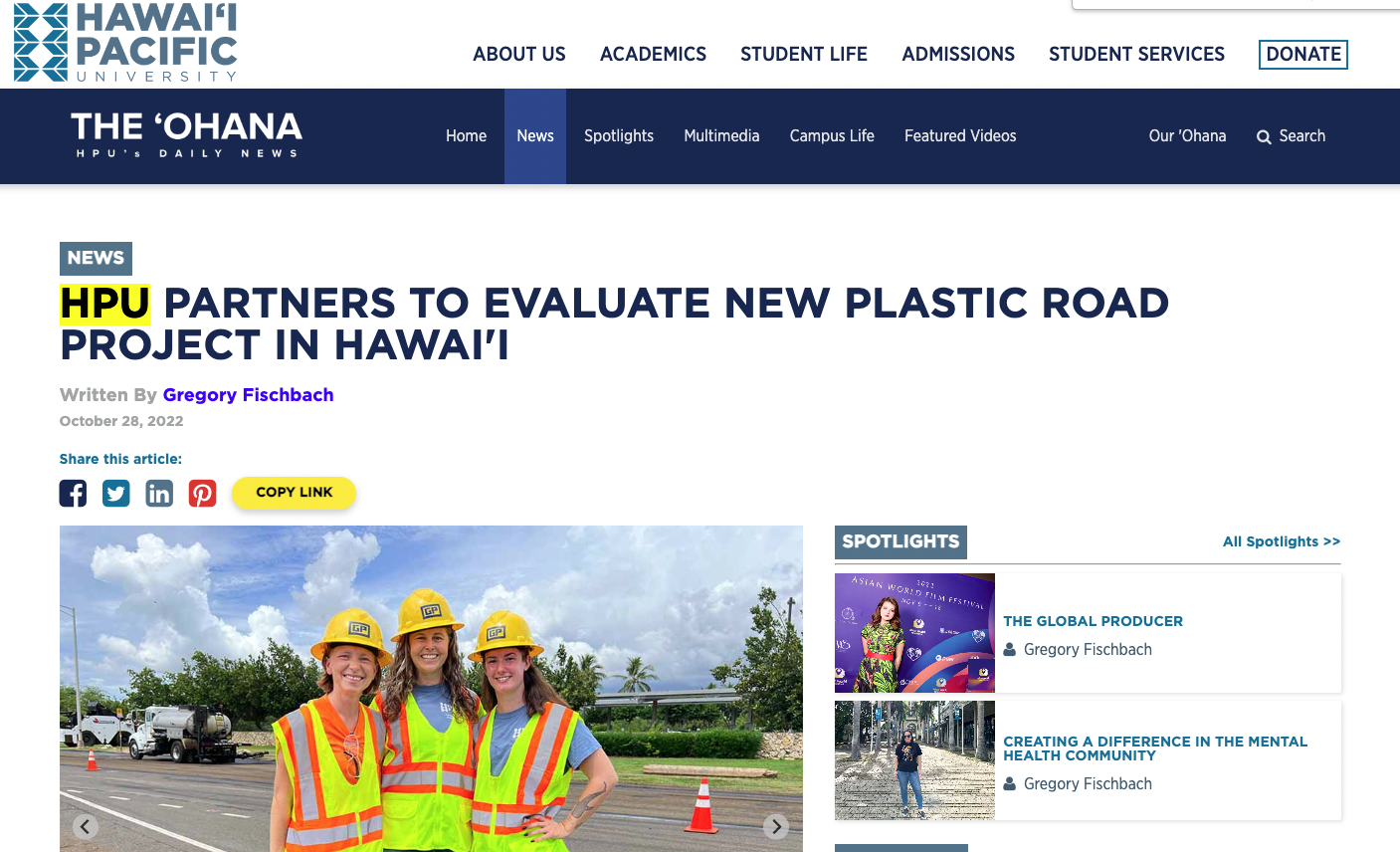
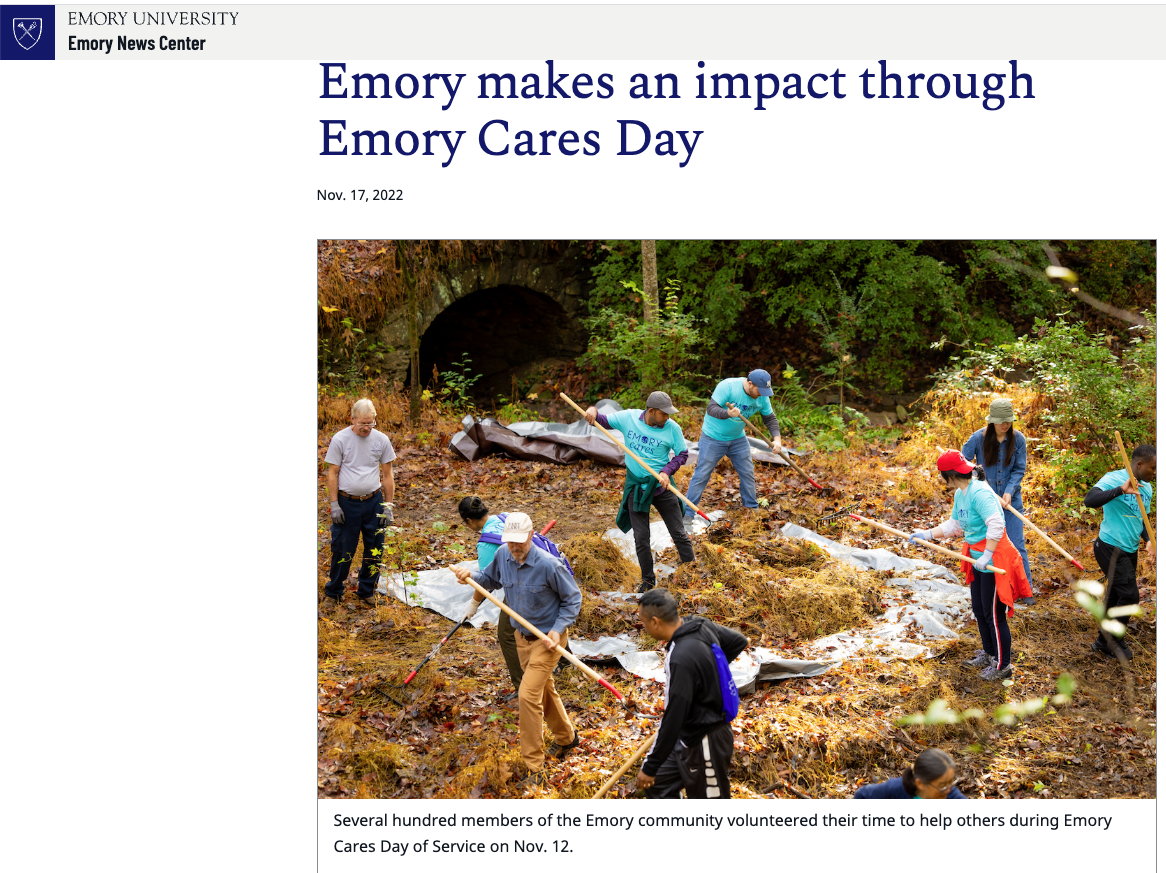
Stories educate, unite, give purpose, and connect. Stories are memorable and help convey complex data and subject matter findings into easily digestible formats.
Stories motivate, inspire, and lead to life-altering actions in individuals, groups of people, and communities.
Stories are part of the human experience.
The story examples above only give a glimpse into the wonderful work our clients do on a daily basis to impact those within their reach. Yet, without the power of story, we'd never know about them and, thus, be the poorer for it.
So, tell your story, and share it with the world. Your audience is waiting for you!
And if you'd like help telling your story, contact us by filling out the form below to be featured in a customer spotlight. We are here to help.
Last Updated: Dec 1, 2022 12:00 AM